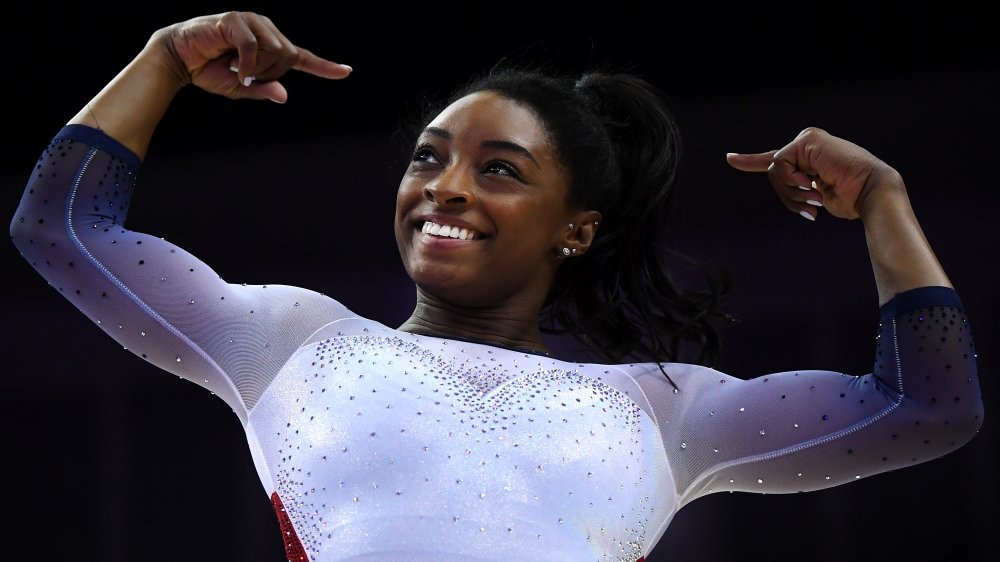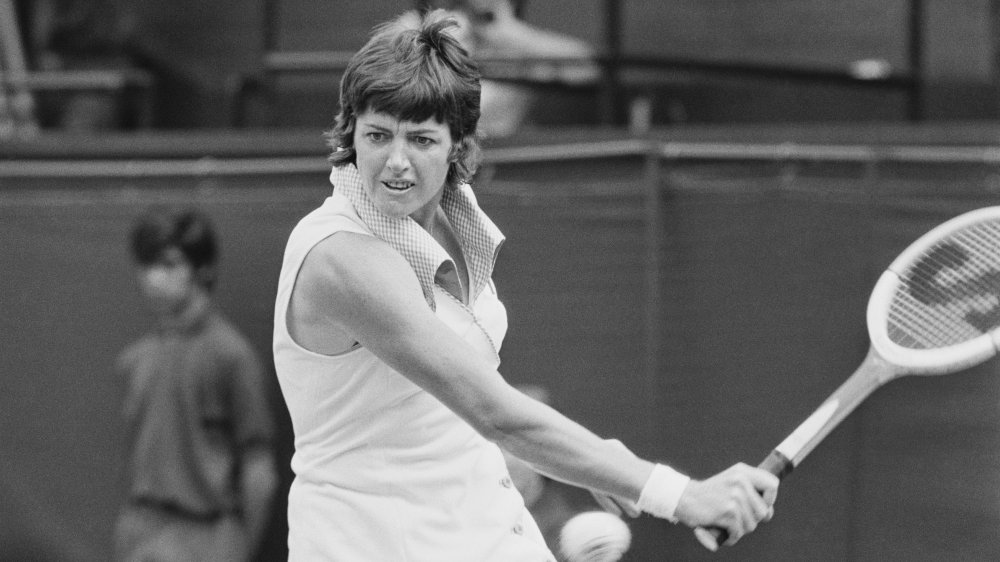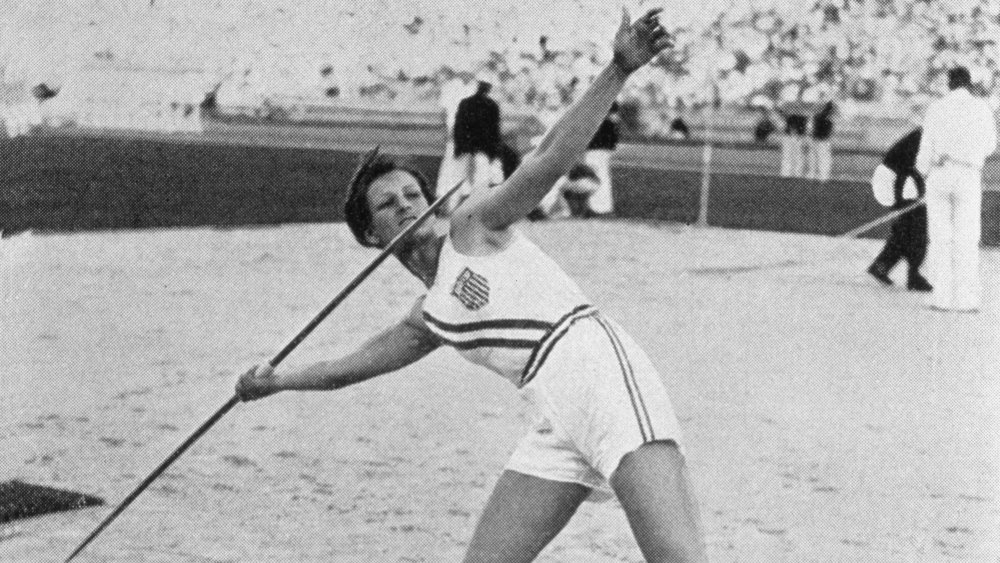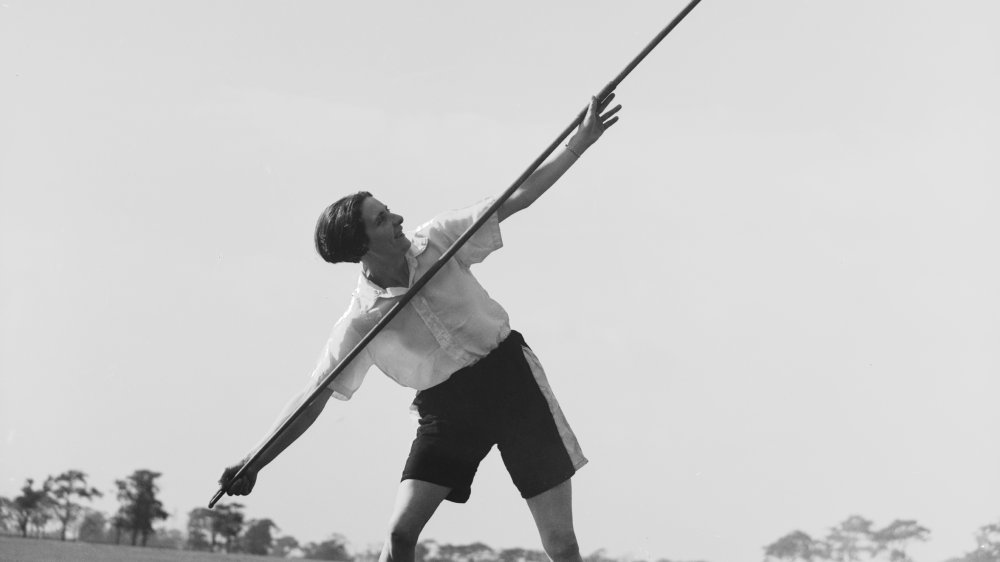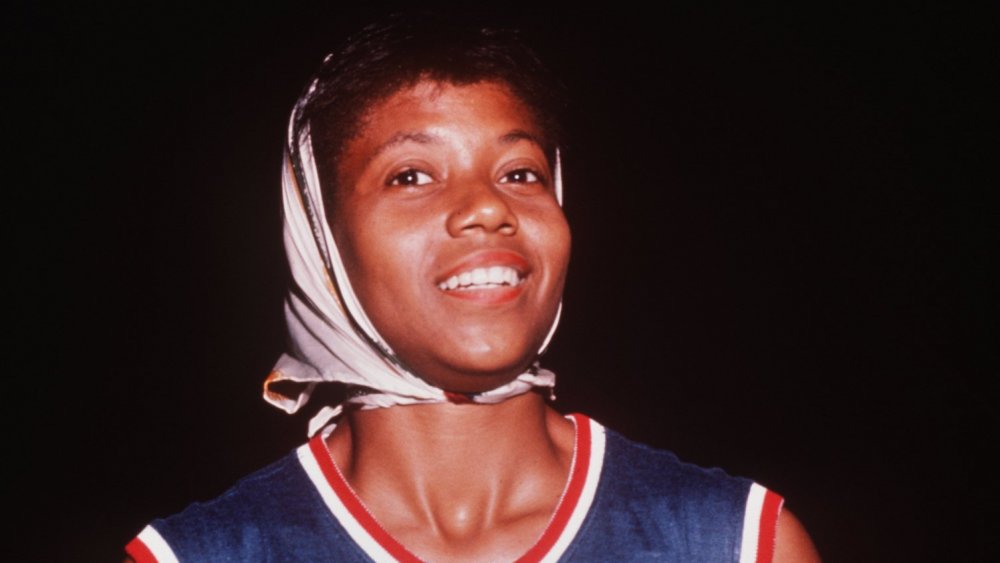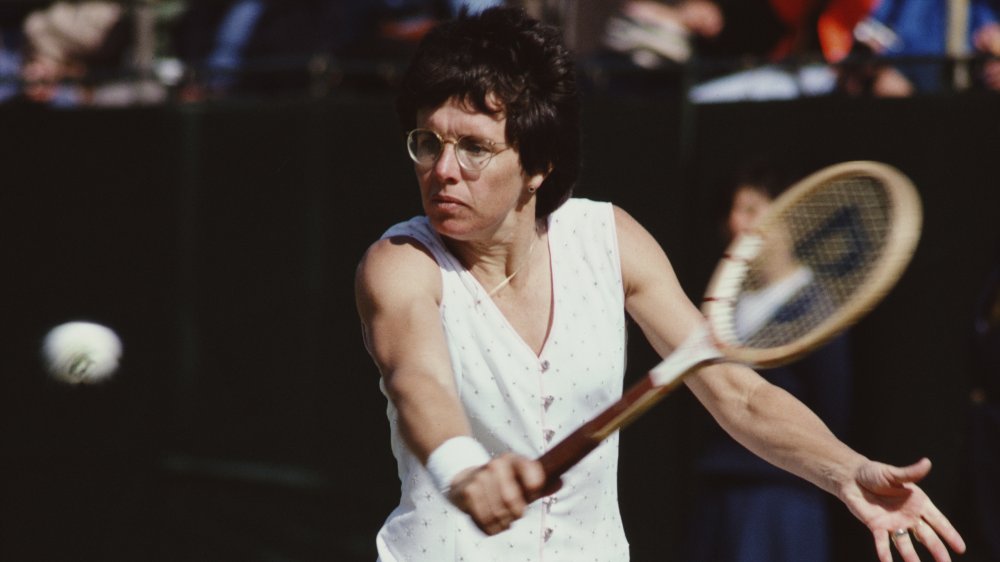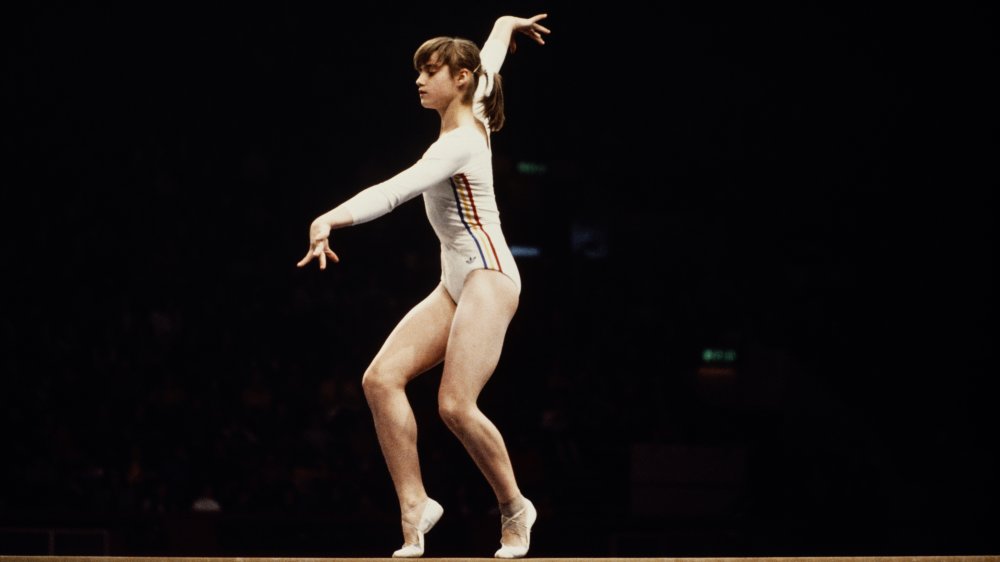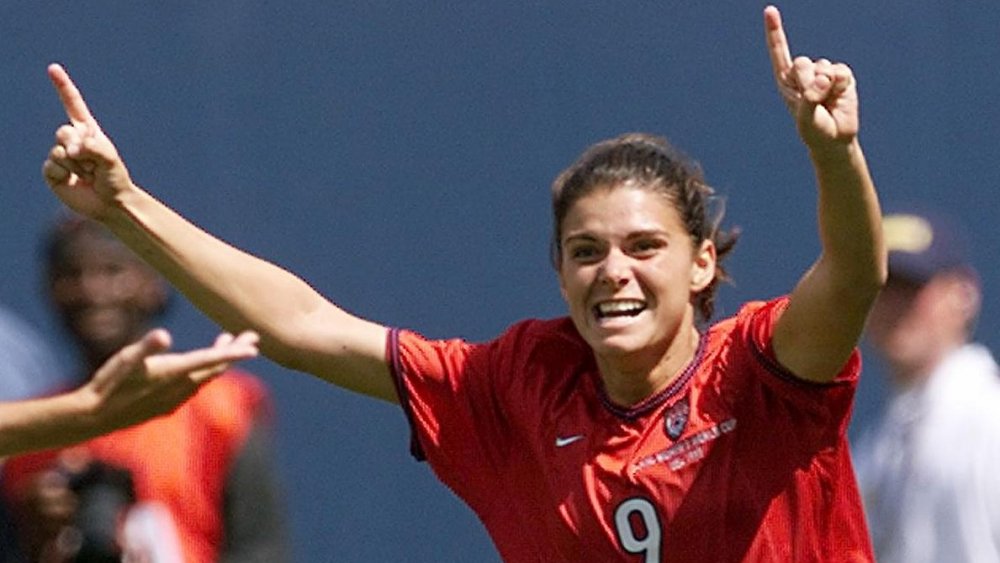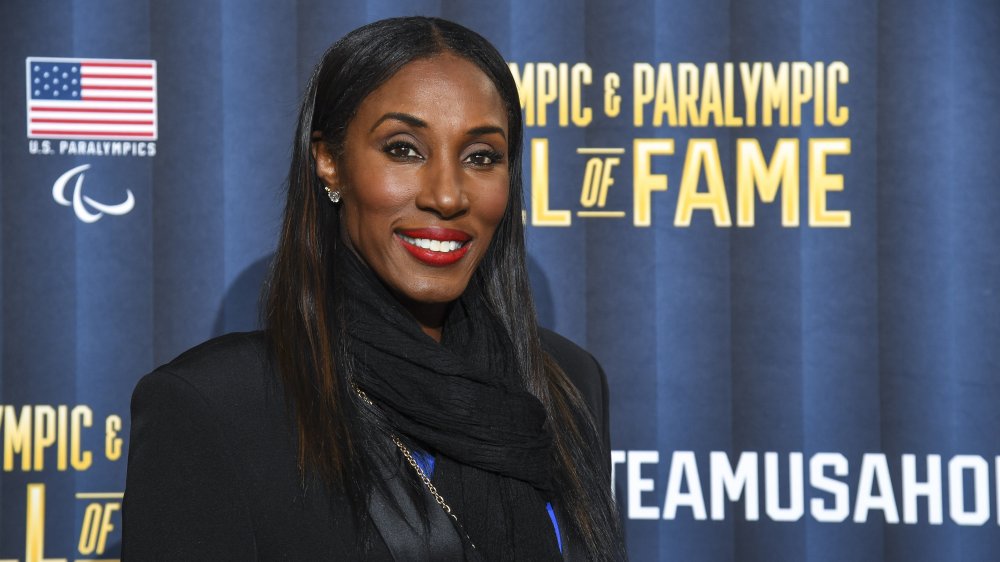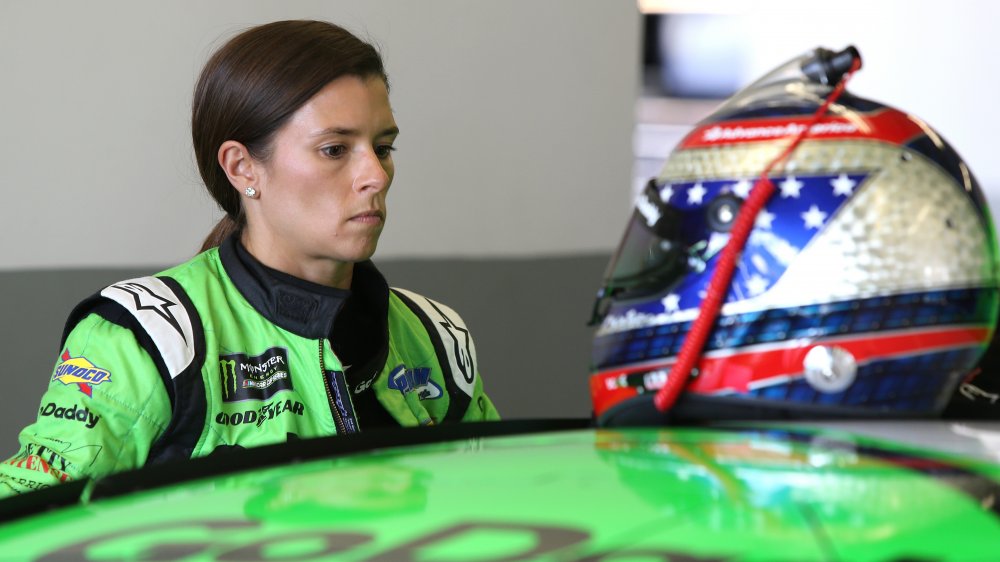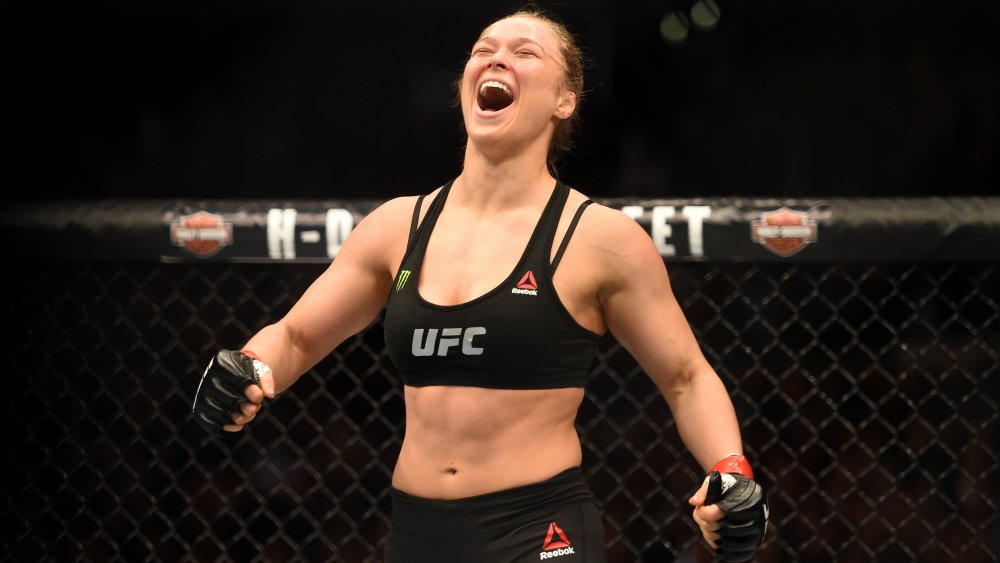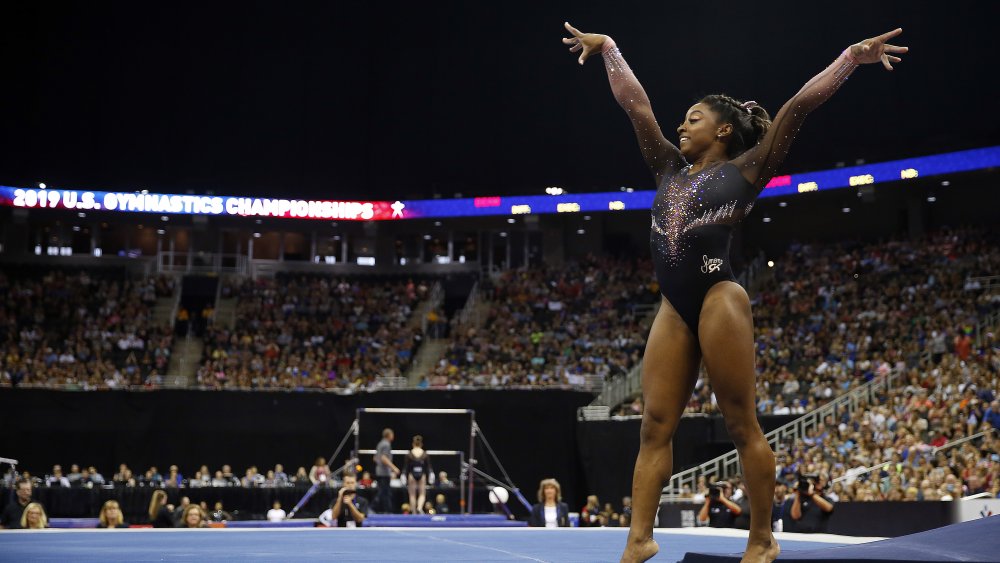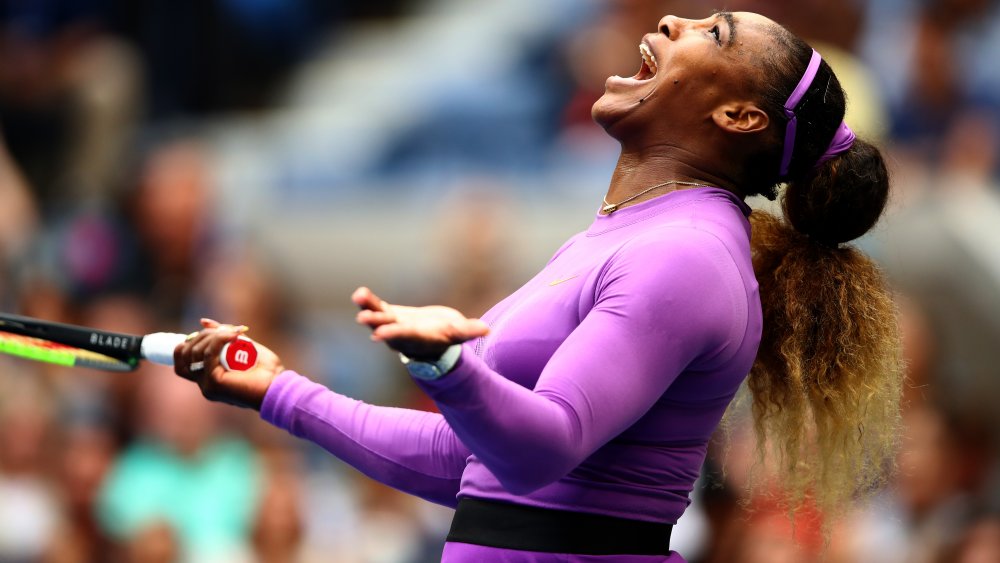The Most Influential Female Athletes Of The Past Century
For decades, women have encountered all sorts of hurdles and setbacks in the world of sports. Sexism, racism, and different sets of playing rules have stifled female athletes and ruined careers. Some women were completely banned from pursuing their amateur or professional dreams because of small-minded opinions that should never again be shared by any governing body.
In other words, it's incredibly hard to become a successful female athlete, so those who've succeeded in the wild world of sports are truly incredible competitors. But which of these players are the best? And which ones have had the most impact, on and off the field? Well, today, we're taking a look at some of the most important women who've ever dunked a basketball, scored a goal, or submitted their opponent inside a ring. From gymnasts to tennis players and everything in between, here are the most influential female athletes of the past century.
Margaret Court retired the greatest tennis player ever
Margaret Smith Court deserves to be recognized as the greatest tennis player of the 20th century. In 1960, Court won the Australian Open, her first singles Grand Slam. She would go on to win 23 more major singles titles, the most recorded by any player, male or female. She added 40 doubles Grand Slams to her resume for a record 64 total major titles.
Court retired with a ridiculous overall record of 1,180 wins and 107 losses, good for a career win percentage of 91.69 percent. As of December 2019, Court was one of only three players, all women, to win a career grand slam boxed set (singles, doubles, and mixed doubles grand slam titles).
However, following Court's playing days, she repeatedly found herself in hot water over her views on homosexuality. In January 2019, Gerald Marzorati of the New Yorker referred to Court as an "anti-gay zealot." Well-known figures such as tennis legend Billie Jean King and Vogue editor-in-chief Anna Wintour also publicly criticized Court during the 2010s. Whether or not a professional venue should carry the name of somebody with Court's political and social views is a matter of opinion. What can't be debated is Court's on-the-court (pun intended) prowess. In July 2019, Ron Cobb of The St. Louis Post-Dispatch hailed Court as the greatest player in history.
Babe Didrikson may have been the greatest American athlete of the 20th century
As sources such as ESPN and The Independent tell the tale, Mildred Ella Didrikson earned the nickname "Babe" because boys who admired the home runs she clobbered as a young lass compared her to Babe Ruth. And if she welcomed the moniker, then who are we to argue with the woman voted by the Associated Press as the Greatest Female Athlete of the first half of the 20th century? Unlike the majority of the female athletes spotlighted in our list, Didrikson didn't just star in one sport. She was remarkable in just about every athletic endeavor. Track, basketball, baseball, tennis, volleyball, swimming, bowling, handball, cycling, you name it. She probably would've dominated E-Sports. Didrikson could do it all.
The only reason Didrikson competed in just three events at the 1932 Summer Olympics was that three was the limit for women at the time. She qualified for five competitions. At those Los Angeles Olympics, Didrikson won gold in the 80 m hurdles and the javelin throw, and she took silver in the high jump.
Following those Summer Games, Babe Didrikson became the first true female golf celebrity, and she was a co-founder of what became known as the LPGA. In total, she won over a dozen amateur events and was the first woman to attempt to qualify for the men's US Open. Her application was denied. But all things being equal, Didrikson may be the most accomplished all-around athlete, male or female, in recorded history.
Lily Parr was world soccer's first female soccer star
No footballer (aka soccer player) on the planet was quite like Lily Parr in 1919 and the 1920s. As explained by the BBC, Parr began playing competitively at the age of 14, and she tallied a whopping 43 goals in her first season. By the time she hung her boots up, she had over 980 goals to her name, per The Guardian. The post-World War I icon was England's first female soccer star, and she was a big reason her Dick, Kerr Ladies team drew 53,000 fans to Goodison Park in Liverpool for a Boxing Day match. At the time, 150 women's teams existed when the contest occurred.
Disgustingly, the Football Association responded to this growth by banning women's football in 1921. The FA prohibited female footballers from competing on men's fields. Licensed male referees were barred from officiating women's matches. Despite this setback, the woman the BBC called "the Raheem Sterling of her day" continued playing the sport she loved. The Dick, Kerr Ladies toured around the world, and the BBC claims the team "chalked more than 200 games without defeat." Outlets such as the BBC and TalkSport have recognized the Dick, Kerr Ladies as the greatest women's team to ever play.
Wilma Rudolph was the fastest woman in the world
Born in Tennessee in 1940, Wilma Rudolph was lucky to survive childhood. As explained by the National Women's History Museum and ESPN, Rudolph was born prematurely and suffered from multiple ailments during her early years, and she lost the use of her left leg after she contracted polio. She was fitted for leg braces at the age of six, which she wore for roughly three years. A few years after the braces came off, Rudolph became a star basketball player, but the track was her calling.
At the age of 16, Rudolph won a bronze medal at the 1956 Summer Olympics. Four years later, she earned the distinction of "fastest woman in the world" when she won gold in the 100 m and 200 m. She also anchored the gold-medal winning 4x100 m team, becoming the first American woman to win three gold medals at one Olympics.
As tremendous as Rudolph was on the track, her impact off it cemented her legacy as one of the most influential athletes, male or female, of her time. At Rudolph's request, her post-Olympics homecoming parade and banquet were integrated, the first such events to occur in her hometown. Later in life, she created the youth sports-related Wilma Rudolph Foundation.
Billie Jean King made history with the 'Battle of the Sexes'
Individuals who only recognize Billie Jean King from history books or what they've read on the Internet know she's a television analyst, an outspoken activist, and a pioneer of both gay rights and the women's movement. She's all of those things, of course, but she was also one of the greatest tennis players in history. King tasted victory at Wimbledon 20 times in total, and she retired with 39 grand slam titles. She was the first woman named Sports Illustrated Sportsperson of the Year, President Barack Obama called King "an agent of change" when awarding her with the Medal of Freedom in 2009, and the USTA Billie Jean King National Tennis Center is named after her.
King's monumental on-the-court moment occurred in 1973 when she defeated Bobby Riggs in the famous "Battle of the Sexes" match. More important than King's dominant victory over Riggs was the number of eyes she drew to her pummeling of a man who later became a friend. According to Houstonia magazine, over 90 million people tuned in for King's biggest win. To put that number in perspective for modern audiences, according to Sports Media Watch, Game 7 of the NBA Finals between the Cleveland Cavaliers and Golden State Warriors — an event that featured LeBron James and a Cleveland team looking to win the city's first pro title in 52 years — drew under 32 million viewers.
Nadia Comaneci became a household name in 1976
A small percentage of athletes reach a level of superstar status where they're known by a single name. There's LeBron, Tiger, Ichiro, and Neymar. And in 1976, a 14-year-old Romanian gymnast became an international sensation featured on numerous magazine covers and an icon instantly recognized by a single name: Nadia.
According to CNN, Nadia Comaneci entered the '76 Summer Olympics, held in Montreal, Canada, with realistic and low expectations. No knowledgeable expert predicted ahead of the Games that Comaneci would become the first gymnast in history to record a perfect 10, a feat she repeated six times en route to winning the all-around gold medal, two other solo golds, and a pair of team medals. For a cliched 15 minutes, the youngest all-around gold medalist in Olympic history was just "Nadia" and one of the most famous individuals, never mind athletes, on the planet.
As a result, a pair of gymnastics moves on the uneven bars were named after Comaneci, and she was the second gymnast to win the Associated Press Female Athlete of the Year. Comaneci not only inspired countless amounts of young girls who viewed her performances via television, but she helped Bela and Marta Karolyi become household names in the United States, which ultimately changed the country's gymnastics programs in many ways.
Mia Hamm is America's greatest soccer star
The United States Women's National Team and women's soccer, in general, couldn't have had a better ambassador in the 1990s and early 2000s than Mia Hamm. Hamm possessed a girl-next-door charm and personality visible in commercial spots that featured Hall of Fame basketball players Michael Jordan and Shaquille O'Neal. In her prime, Hamm was also her country's best overall soccer player and the first female player to earn the type of celebrity status too often reserved for men such as His Airness.
A two-time World Cup and two-time Olympic champion, Hamm retired with the record for the most international goals in history. By the end of 2019, fellow American Abby Wambach and Canadian forward Christine Sinclair both sat above Hamm in that category, but neither were as influential during their careers. FIFA awarded the first two Best Women's Player awards to Hamm in 2001 and 2002.
In November 2014, Grant Wahl of Sports Illustrated named Hamm "the biggest US-born soccer star of all time." No American had removed that crown from Hamm's head by the end of the decade. Hamm was a role model for both young girls and boys who dreamed of wearing a US shirt and scoring goals at a World Cup.
Lisa Leslie was a female athlete who did far more than just dunk
As Tara Jones of Swish Appeal eloquently wrote in September 2015, Lisa Leslie is far more than just a single historic dunk. Between 2001 and 2006, Leslie earned WNBA MVP honors three times, and she won two league titles and four Olympic gold medals during her Hall of Fame career. She was the first WNBA player to score 4,000 career points and, later, 6,000, and she retired with more rebounds than any player in league history.
One cannot tell the story of Leslie, though, without mentioning her throwing the basketball through the rim with authority. With the first dunk in WNBA history, Leslie destroyed the final barrier that separated men's and women's basketball, one that never should've existed in the first place. The clip of her impressive feat went whatever the 2002 version of viral was, and it served as a precursor for Candace Parker and Francesca Belibi winning McDonald's All-American Game dunk contests and for Brittney Griner assaulting rims during WNBA contests.
Dunks at all levels of basketball, professional and amateur, sell tickets and attract eyes. One can only estimate how many previous WNBA detractors gave the league and the women's game some of their time to see Leslie either dunk or fail. Those people watched, though, and that's what mattered.
Danica Patrick won big despite never finishing first
The shocking and tragic death of racing legend Dale Earnhardt near the conclusion of the 2001 Daytona 500 irreparably damaged NASCAR's popularity among fans who ultimately quit the sport for good after their favorite competitor passed away. Viewers wanted to embrace Dale Jr., but he never matched his father's accomplishments or level of fame. Names like Tony Stewart and Jimmie Johnson generated headlines but couldn't prevent declines in television ratings.
And sure, nobody will ever confuse Danica Patrick for "the Intimidator." She never won a NASCAR race. Winning isn't everything, though, and that's why David Whitley of the Orlando Sentinel was correct when he campaigned for Patrick to earn induction into the NASCAR Hall of Fame. Patrick popped positive TV ratings multiple times throughout the 2010s, unlike any other driver on the circuit. She was the first woman to start a Sprint Cup race from the pole position, and per Whitley, fellow driver Kurt Busch credited Patrick for the increase of female racers around the world.
Individual sports like racing are as much about lifetime earnings as they are about chasing titles. Patrick made millions of dollars from her NASCAR career, and that doesn't include her numerous endorsement deals. All should think twice before joking that she never "won."
Ronda Rousey brought women's MMA to the UFC
It's comical to think Ultimate Fighting Championship czar Dana White told TMZ that women would never fight in the Octagon back in January 2011. Later that year, a beautiful blonde named Ronda Rousey took Strikeforce by storm en route to becoming the baddest woman on the planet. By November 2012, White saw dollar signs in the judo expert, and the UFC signed Rousey that fall.
Just as Jackie Robinson was the perfect player to break Major League Baseball's color barrier in 1947, Rousey was the ideal athlete to put women's mixed martial arts on the map. Rousey won her first six bouts with relative ease. Like a WWE superstar, she cut promos and had a finishing-move armbar. Sure, Conor McGregor has sold more pay-per-view buys as a main-eventer since becoming a star, but Rousey helped make the UFC, and MMA in general, mainstream. Before Rousey held UFC gold, even the thought of ESPN one day hosting UFC PPVs via any of the company's services was laughable.
As Rolling Stone put it in the summer of 2015, Rousey offered definitive proof women could be the UFC's biggest stars and could also main-event cards. No figure was more important to the sport during the 2010s.
Simone Biles is the greatest gymnast ever
Industry experts and journalists may only begin to grasp Simone Biles' impact and influence on gymnastics and women's sports around 2030, when a young woman stands on a gold-medal podium and declares Biles was her role model and idol. In 2013, Biles made history by becoming the first African-American all-around world champion, and she will retire as the most decorated gymnast among all athletes, male or female, in world competitions.
In the summer of 1996, America fell in love with Kerri Strug, Shannon Miller, and the rest of the "Magnificent Seven" United States women's gymnastics team that won the program's first team Olympic gold. NBC will air replays of Strug's famous vault as long as the television provider owns the media rights to the Games. But Biles has eclipsed that famous squad and not just because of her resume. The diminutive acrobat goes viral nearly every time she competes or when she throws out the first pitch at a World Series. The greatest gymnast of all-time trends on Twitter and has high-definition cameras pointed at her whenever she soars through the air during a floor routine. Many athletes before Biles earned spots on cereal boxes, but none were a sport's biggest and best star during the social media era. In fact, one day, some may say that Nadia Comaneci was her generation's Simone Biles.
Is Serena Williams the best athlete of all time?
Comparing modern athletes to those from eras and generations ago is largely unfair. Saquon Barkley could rush for 200 yards per half versus football defenses from the 1950s. LeBron James would've scored for fun against old ABA teams. And while Serena Williams will never catch Margaret Court in total grand slams, the eye in the sky doesn't lie, and you don't have to be a tennis insider, coach, or pro to realize Williams is the most talented women's player ever. Any figurative competition isn't all that close.
Since the start of the Open Era, no player, male or female, was more dominant than Williams in her prime. Those who refer to Maria Sharapova as Williams' rival are being nice to the former. Williams is such a once-in-a-century player that she's sparked conversations about if a tennis star can be viewed as the world's greatest athlete ever.
As Williams once wrote for Time, she endured unwarranted criticism and racism at a young age when she should've been recognized as the sport's next big thing. She also had to compete with her older sister, Venus, throughout the years. Off the court, the Williams sisters are fashion icons, and Serena has championed causes such as awareness about financial abuse.
